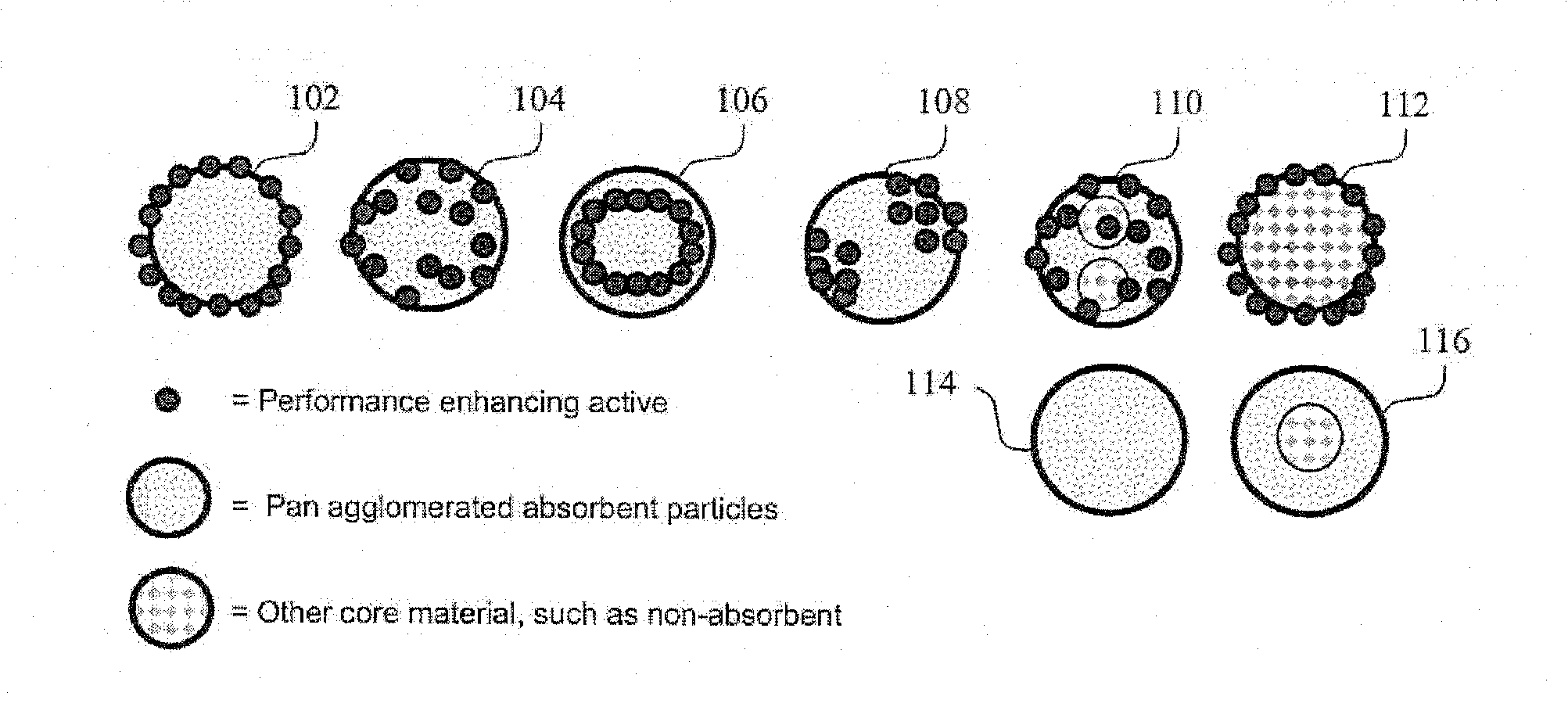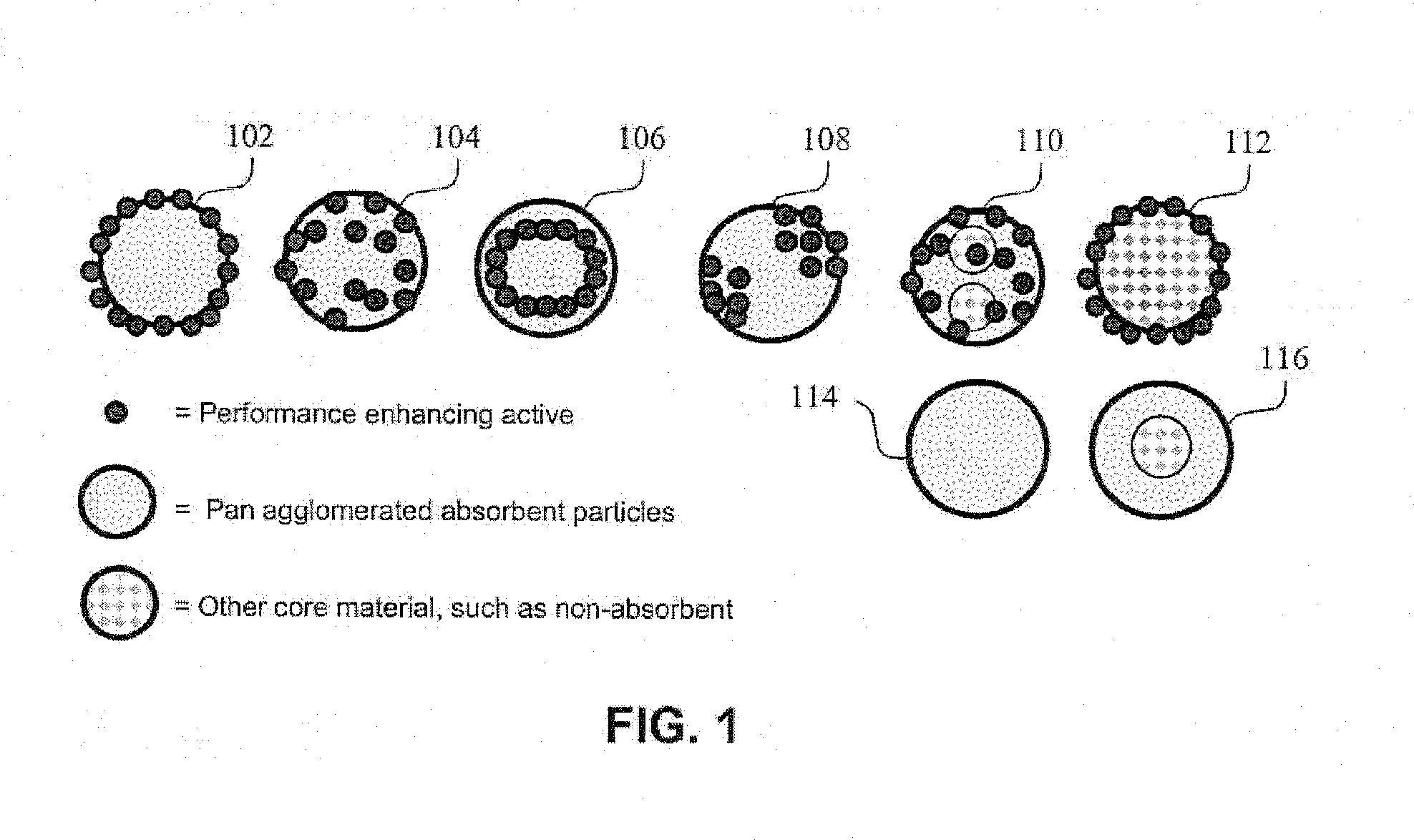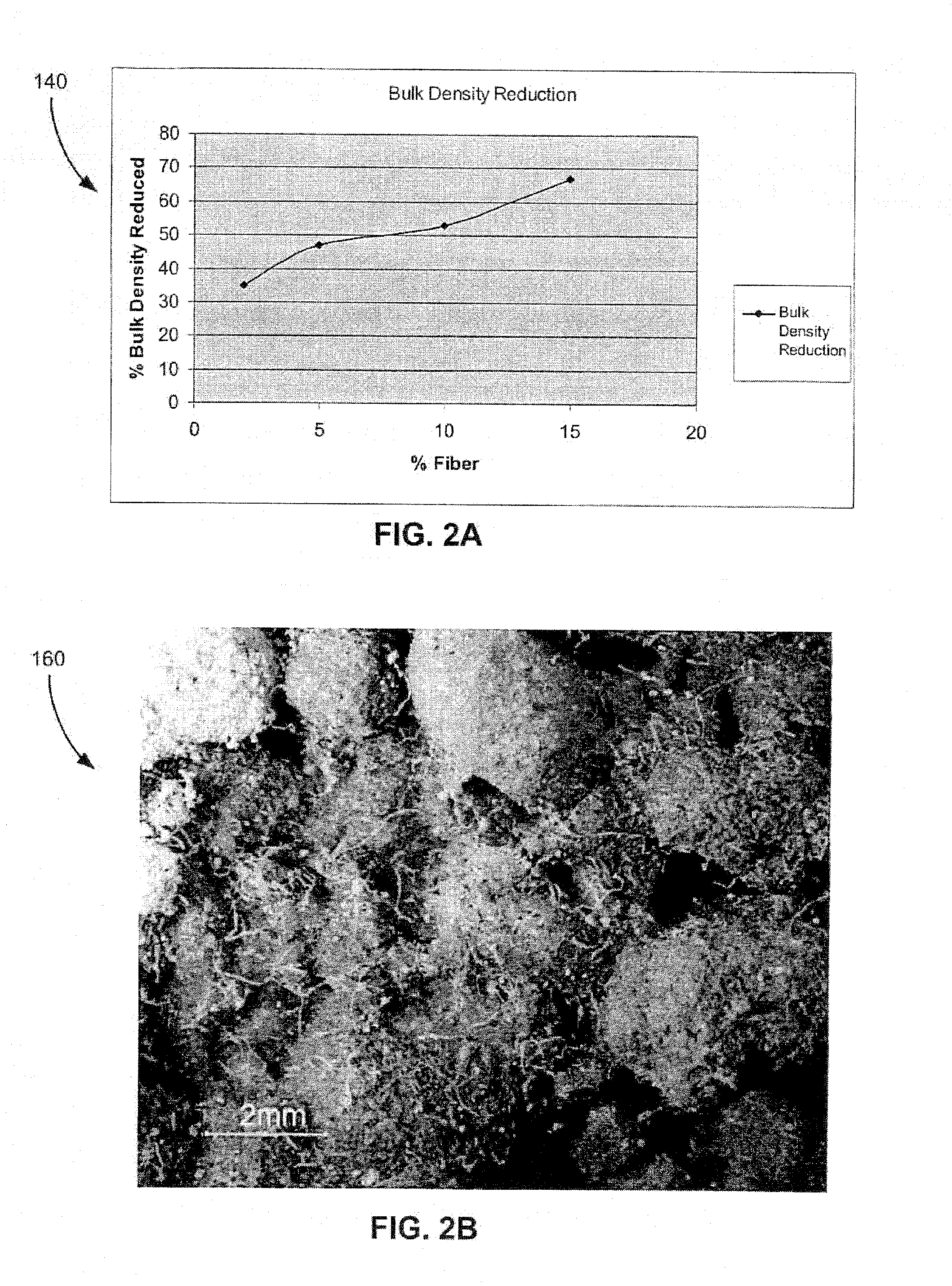Dry Bed Agglomeration Process and Product Formed Thereby
a technology of agglomeration and dry bed, which is applied in the direction of separation process, filtration separation, chemistry apparatus and processes, etc., can solve the problems of malodor formation, compounded breakage problem, and remaining wet litter in the container
- Summary
- Abstract
- Description
- Claims
- Application Information
AI Technical Summary
Benefits of technology
Problems solved by technology
Method used
Image
Examples
experiment 1
[0126] Cellulose fibers (˜2-3 mm) were added to sodium bentonite clay (about 100-500 mesh) in a pilot plant scale pin mixer equipped with a rotary drier to form composite particles. The particles were then sieve-screened to approximately 12×40 mesh and 6×40 mesh in size. The cellulose fibers were added at 0%, 4%, and 6% levels. Each sample depicted in the tables below represents six clumps. Three of the six clumps were formed by dosing the litter composition with 10 ml of cat urine and waiting 2 hours. The remaining three of the six clumps were formed by dosing the litter compositions with 10 ml of cat urine, waiting 1 hour, then redosing with an additional 10 ml of cat urine and waiting an additional 1 hour. All six clumps were then shaken lightly for 5 seconds. The clumps were pancake-shaped and sticky to the scoop and to the touch.
[0127] Table 2 summarizes the average size, shape and strength of the clumps.
TABLE 2Avg.Avg.Avg.LongestShortestAvg.ClumpLengthLengthHeightAspectStre...
experiment 2
[0129] Cellulose fibers were added to sodium bentonite clay in a pilot plant scale pin mixer equipped with a rotary drier to form composite particles. The cellulose fibers were added at 0%, 4%, and 6% levels. The composite particles were then blended with non-agglomerated bentonite clay and sieve-screened to 12×40 mesh to form a litter composition comprised of a composite blend (i.e., about 35% composite particles: about 65% bentonite clay). Each sample represents the average of three clumps formed by dosing the litter compositions with 10 ml of cat urine and waiting 2 hours (single dose) or the average of three clumps formed by dosing the litter compositions with 10 ml of cat urine, waiting 1 hour, redosing the clumps with an additional 10 ml of cat urine and waiting an additional 1 hour. Longest length, shortest length and height measurements were taken without disturbing the clumps in the box.
[0130] In addition to the clump size, the clump strength was also measured, i.e., the a...
experiment 3
[0132] Cellulose fibers were added to sodium bentonite clay (about 100-500 mesh) and powder activated carbon (about 25-150 μm) in a pilot plant scale drum mixer equipped with a rotary drier to form composite particles. The composite particles were sieve-screened to about 4×60 mesh. The cellulose fibers were added at 0%, 5%, and 15% levels. Each sample represents three clumps formed by dosing the litter compositions with 10 ml of cat urine and waiting 2 hours (single dose) or three clumps formed by dosing the litter compositions with 10 ml of cat urine, waiting 1 hour, redosing the clumps with an additional 10 ml of cat urine and waiting an additional 1 hour. In addition to the clump size, the clump strength was also measured using the method outlined in Experiment 2 above. Absorbent capacity was calculated by determining the weight of litter needed to absorb 10 ml or cat urine. Absorbency is reported as the grams of urine absorbed per 1 gram of litter composition.
[0133] Table 4 sum...
PUM
| Property | Measurement | Unit |
|---|---|---|
| mean particle diameter | aaaaa | aaaaa |
| mean particle diameter | aaaaa | aaaaa |
| mean particle diameter | aaaaa | aaaaa |
Abstract
Description
Claims
Application Information
 Login to View More
Login to View More - R&D
- Intellectual Property
- Life Sciences
- Materials
- Tech Scout
- Unparalleled Data Quality
- Higher Quality Content
- 60% Fewer Hallucinations
Browse by: Latest US Patents, China's latest patents, Technical Efficacy Thesaurus, Application Domain, Technology Topic, Popular Technical Reports.
© 2025 PatSnap. All rights reserved.Legal|Privacy policy|Modern Slavery Act Transparency Statement|Sitemap|About US| Contact US: help@patsnap.com



